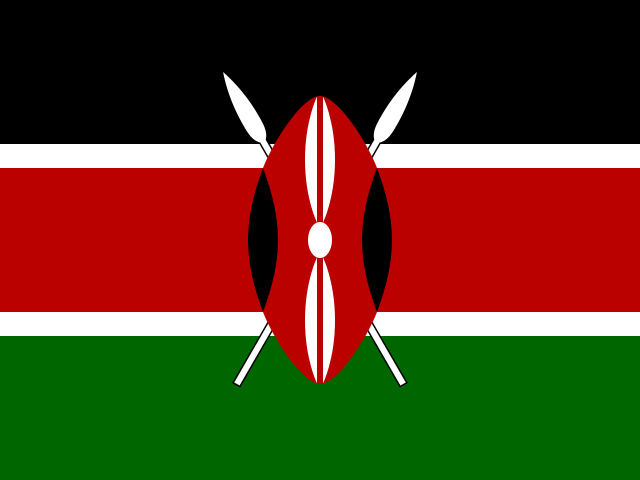
Kenya
*Survey sample primarily comprised of English speakers
Kenyans use a wide variety of social networks, with news and politics a key part of the diet along with lifestyle, comedy, religion, and other genres. Despite a lively creator and influencer scene, the most mentioned individuals in our news-related list are anchors from the top TV stations. These have followings in their own right but also through playlists in branded channels. Citizen TV, for example, has 6m subscribers to its YouTube channel and 6.8m on X and promotes both live streams and on-demand content. Independent creators, many critical of the government, regularly uncover stories of corruption or other wrongdoing, while citizen journalists and ordinary people use social channels to document police brutality, for example at recent anti-governments protests. The government itself has an active digital strategy, which often involves working with influencers to disseminate public information and talking points.
Entertainment and celebrity news is another key characteristic of the Kenyan market, with influencers and comedians competing with independent creators and digital-born brands. The Nairobi Gossip Club’s Instagram account (3.3m followers) is a much mentioned source along with reality stars and so-called influencers. TikTok is an important channel in Kenya, especially for lifestyle content.
Larry Madowo is representative of a younger cohort of journalists and creators in a country where 75% of the population is under 30. They have grown up with social media and are comfortable with more informal and personal styles of communication. Other examples include the comedian Eric Omondi, who though primarily an entertainer, uses his platform (5m followers on Instagram) to raise awareness about economic hardships, mental health issues, and the struggles faced by vulnerable groups in Kenya. This sometimes extends to raising money for and advocating for individuals.
Elsewhere we find a number of independent creators setting up YouTube, Instagram, and TikTok channels. Lynn Ngugi is a former video producer and host with Tuko News and her regular YouTube show (1.4m followers on YouTube) features powerful personal stories – from survivors of abuse to everyday heroes – that she says are largely uncovered by mainstream news. Oba Obinna, a businessman and comedian, runs Obinna TV, which is both a talent agency for creators and a production house. His popular talk show is known for candid interviews with celebrities, but he also discusses men’s mental health and political transparency.
The newsguy.ke is a popular figure on TikTok where he breaks stories and curates news using short, accessible videos. He often presents the news from ordinary locations such as his local barber shop – in contrast to the slick studio sets of traditional TV.
Edgar Obare is a Kenyan blogger notorious for spilling celebrity gossip and ‘tea’ (scandalous exposés) on social media. He operates primarily via Instagram, where he invites anonymous tips to uncover alleged infidelity, fraud, or other dramas involving Kenyan public figures.
Gen Z lifestyle creators are a growing feature of the Kenyan media scene. Temina Semo is a lawyer and fashion influencer on Instagram, but she also uses her platform to talk about issues such as femicide and women’s rights. Shawn Dalmas is a creator and podcaster who is mostly known for skincare education but also describes himself as a human rights advocate and climate activist, issues that concern his generation.
Proportion that regularly pay attention to creators/influencers in social and video networks
58%
(2/24)
Proportion that regularly pay attention to news brands/journalists in social and video networks
34%
(7/24)
Gender balance
12
of the top 15 are men
These lists represent the individuals most mentioned by respondents to our 2025 and 2024 Digital News Report surveys in the context of news and social media and video networks. Respondents who used Facebook, YouTube, X, Instagram, Snapchat or TikTok for news were asked where they paid most attention – including options for traditional news media/journalists, digital-first news outlets not associated with traditional media, creators/personalities who mostly focus on the news, creators/personalities who occasionally focus on the news. For each type, we asked respondents to name up to three examples of who they paid attention to. We then counted the individuals mostly using a tool called OpenRefine to help us use a semi-automated approach to clean the data (e.g. resolve misspellings or alternative names, remove duplicates etc.). In parallel, we also used ChatGPT5 to process and recode the original data, and to identify the most mentioned individuals to give us a way of comparing results. Further details on the tools we used and on small differences in methodology between 2024 and 2025 are provided in our methodology section.
Why did you use open fields rather than closed lists to collect the data?
We used open text response boxes, first, because in many countries the most popular news creators and influencers have not yet been identified by previous research. Second, because it would likely not be possible to fully capture the broad and fragmented nature of this ecosystem using a fixed listed of response options. And third, because we wanted to adopt an audience-centric approach whereby respondents could enter names that they considered news sources to them, even if they did not meet accepted standards or definitions within academia or the journalistic profession. This means that many of the names we list here would perhaps have been excluded under a more top-down approach.
How definitive is the order of the named individuals in each country?
In some cases, especially near the bottom the list, differences in the number of mentions for individuals are very small. Given our survey methodology, and the associated margin of error, the precise rank order should be read as indicative rather than definitive. Many other individuals were mentioned by respondents in the context of news, even if they do not make the top 15 using our approach. The lists should therefore be seen as indicative of some of the top news individuals in each country.
Why are some popular individuals with high follower counts lower down the list than individuals with high follower counts?
There are a number of possible reasons for this. First, some popular creators such as musicians and comedians are known more for entertainment than for news and their follower counts are often higher as a result. This means that even if they do occasionally talk about news related issues, not all of their followers will be aware of it. Second, some individuals working for traditional media may have relatively low personal followings but are widely distributed via social accounts of news brands. Third, there is a margin of error in surveys such as this (see previous answer) that needs to be borne in mind.
Did you exclude any individuals or other entries as part of the process?
Our lists are inclusive in terms of being faithful to the individual names mentioned by respondents. We removed just a handful of actors, sports stars, and celebrities if we were sure they did not post on any news-related issues. In most cases this did not affect the top 15 names that are published in this report for each country.
Many creators operate as part of collectives or use pseudonyms. How did you deal with these categorisation issues?
In terms of creator collectives or social-first brands, such as the Daily Wire (US) or TLDR News (UK) we followed the lead of our respondents. Where audiences have identified them as individuals, we have tended to categorise these as creators rather than news brands, but where they have mentioned a brand, we included them in our list of news brands. Where it was clear, however, that the brand is the work of one individual (e.g. Es.decirdiario/Sheila Hernández in Spain) we categorised them as an individual and made the connection clear in the description. Many creators use pseudonyms and, in these cases, we combined mentions of these with the real names. Again, we tried to make the connection clear in the description.
How did you deal with politicians and the overlap between politicians and political commentary?
Politicians and businesspeople are also frequently mentioned by survey respondents in the context of news sources on social media, and often have significant followings (e.g. on X, Donald Trump has 109m, Narendra Modi 109m, and Elon Musk 225m). Many politicians are also content creators and commentators who shape public debates. Some content creators have become politicians, and vice versa. We chose to include politicians if they were named by respondents in the context of news, but we have also shaded serving (or recently serving) politicians in grey to make clear the different relationship they often have with news consumers.

